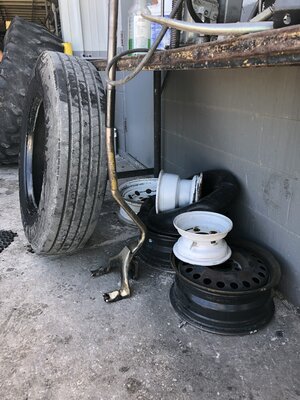AbdRahim
RVF Supporter
- Joined
- Dec 25, 2019
- Messages
- 3,923
- RV Year
- 2020
- RV Make
- Newmar
- RV Model
- BayStar 3626
- RV Length
- 37’
- Chassis
- Ford
- Engine
- V10
- TOW/TOAD
- None
Plugs are a bad idea. If tires are to be repaired it is much better to remove the tire and patch from the inside.I think when patching the tire is not removed. It's just plugged while on the rim. That's how I've seen it done on my car.













